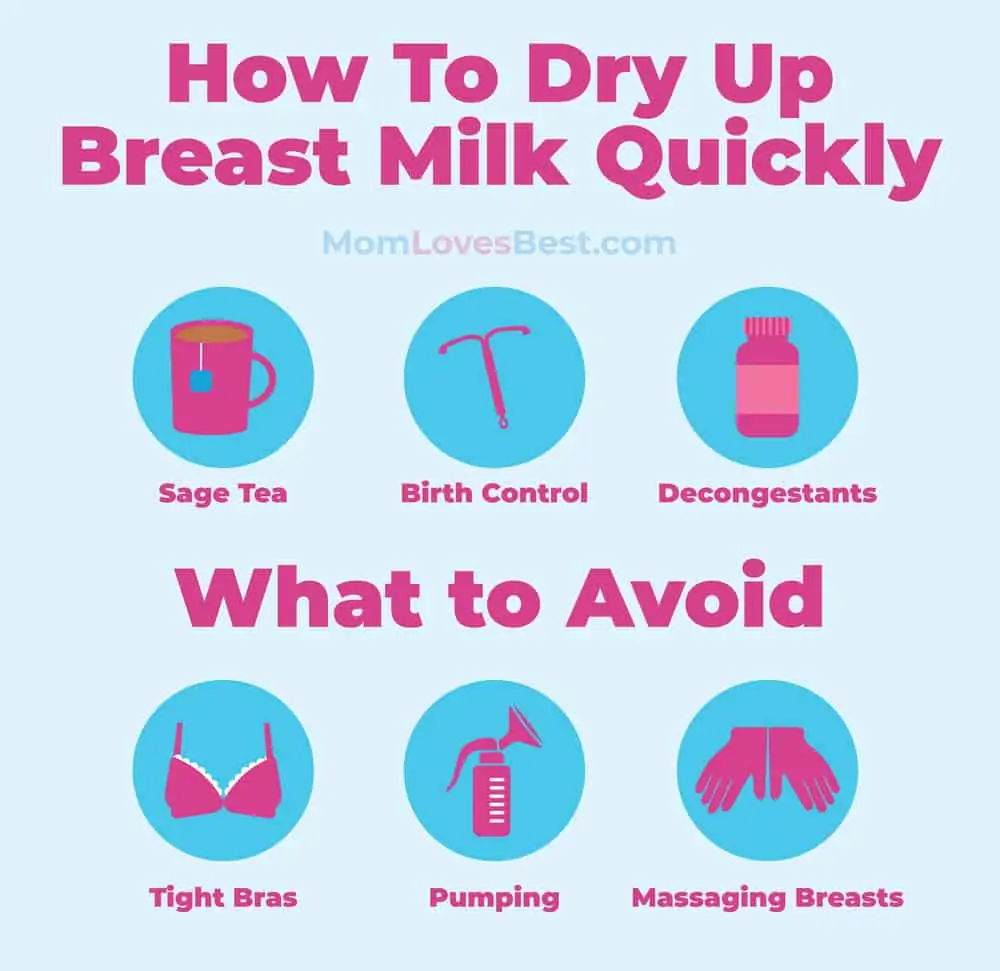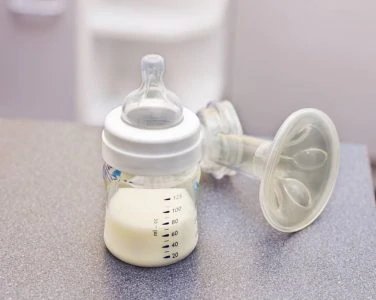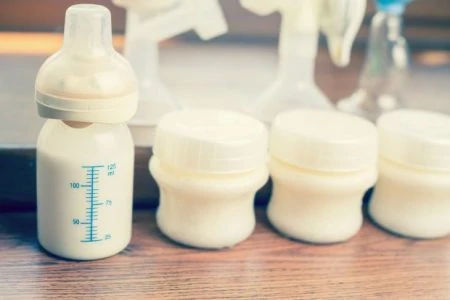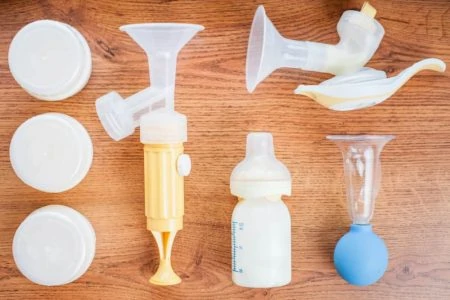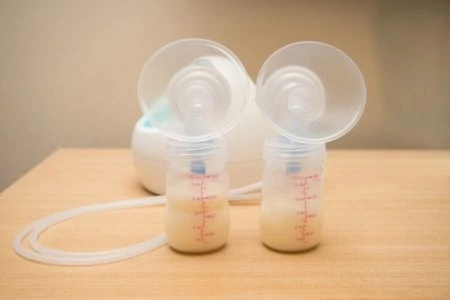Deciding to stop breastfeeding is a major milestone, but your body doesn’t always get the memo immediately. Whether you are switching to formula, weaning a toddler, or facing medical necessity, dealing with engorged breasts can be painful and frustrating.
We have navigated the discomfort of weaning and learned what actually works to stop milk production. In this guide, we break down medical advice and natural remedies to help you dry up your breast milk supply safely and quickly without unnecessary pain.
Key Takeaways
- Wean Slowly: Drop one feeding session every few days rather than stopping abruptly to prevent painful engorgement and mastitis.
- Use Natural Remedies: Sage tea, peppermint, and applying cool cabbage leaves can naturally signal your body to reduce milk production.
- Avoid Stimulation: Do not massage your breasts or pump to empty, as this tells your body to produce more milk; only hand express for comfort if absolutely necessary.
- Manage Discomfort: Utilize ibuprofen, cold compresses, and supportive (but not tight) bras to manage pain while your supply decreases.
Avoid Weaning Your Baby Cold Turkey
If you are ready to stop breastfeeding, the idea of stopping all at once might seem efficient. However, if you have the luxury of time, we strongly encourage a slow and steady approach for your physical health.
Stopping abruptly shocks your system. Breast milk production relies on “supply and demand.” The more you nurse, the more you make. If you stop demanding milk suddenly, your body continues producing it at the previous rate until it realizes the demand is gone.
This mismatch often leads to severe engorgement, clogged ducts, and mastitis (breast infection). By weaning over a few weeks, your body naturally downregulates production comfortably.
Follow these steps to wean your little one gradually:
- Drop One Session: Replace one daily breastfeeding session with a bottle of formula or solid food, depending on your baby’s age.
- Wait and Adjust: Allow your body three to five days to adjust to the missed feeding before dropping the next session.
- Offer Extra Cuddles: Compensate for the loss of physical connection by spending extra time snuggling, reading, or playing to reassure your baby during the transition.
How To Dry Up Breast Milk
Sometimes nature needs a nudge. If your milk supply is stubborn or you need to stop lactating quickly for medical reasons, certain remedies can accelerate the process.
Here are the most effective methods to help dry up your supply:
1. Sage Tea
Sage is one of the most popular natural remedies for reducing milk supply due to its natural estrogen-like properties (1). If you have dried rubbing sage in your spice rack, you can put it to work immediately.
Steep one teaspoon of dried sage in a cup of hot water for 15 minutes. Drink this every six hours. Since sage is naturally bitter, feel free to add honey or lemon to make it easier to drink.
2. Birth Control
Hormonal changes play a massive role in lactation. If you have been taking birth control pills while breastfeeding, your doctor likely prescribed a progestin-only “mini-pill” to protect your supply.
Estrogen is known to suppress milk production (2). If you are ready to stop nursing completely, ask your doctor about switching to a combined estrogen-progestin pill. This hormonal shift can help dry up your milk faster.
Because hormonal birth control has side effects of its own, this should be used as a last resort.
Editor's Note:
Michelle Roth, BA, IBCLC3. Decongestants
The same medicine that dries up a runny nose can also dry up breast milk. Decongestants, specifically those containing pseudoephedrine (like Sudafed), work by drying up secretions in the body (3).
One study showed that a single dose of 60mg of pseudoephedrine could reduce milk production significantly. This is often considered a “last resort” if natural methods fail.
Important Note
4. Jasmine Flowers
If you prefer a topical approach over ingesting herbs or medication, jasmine flowers may help. Research suggests that applying crushed jasmine flowers to the breasts can reduce prolactin levels, the hormone responsible for milk production.
You can wear a necklace of jasmine flowers or simply tape crushed fresh flowers to your breasts inside your bra. It sounds unusual, but it is a traditional remedy that many mothers find effective.
What To Avoid When Drying Up Your Breast Milk
There is a lot of outdated advice circulating about weaning. Some “classic” tips can actually cause more harm than good or prolong the process.
Avoid these common mistakes to prevent pain and infection:
- Tight Bras and Binding: Never bind your breasts with ace bandages or wear overly tight bras. This outdated practice restricts blood flow, increases pain, and significantly raises the risk of clogged ducts and abscesses (4). Wear a supportive sports bra instead.
- Pumping to Empty: It is tempting to pump a full bottle to relieve pressure, but this tells your body to make more milk. If you are in pain, hand express or pump only enough to take the edge off, leaving the breast mostly full.
- Breast Stimulation: Nipple stimulation triggers the let-down reflex and prolactin production. Avoid massaging your breasts or letting hot water hit your nipples directly in the shower, as this encourages flow.
Reducing Breast Pain While Weaning
Weaning can be physically uncomfortable, but you do not have to suffer through it. Managing inflammation is key to getting through the drying-up phase without misery.
Here are the best ways to manage pain while your supply decreases:
1. Cold Cabbage Leaves
It sounds like an old wives’ tale, but it is backed by science and generations of moms. Green cabbage leaves contain enzymes that help reduce swelling and inflammation in breast tissue.
Follow these steps for the cabbage leaf method:
- Prep the Leaves: Wash and dry green cabbage leaves, then place them in the refrigerator until they are cold.
- Crush the Veins: Use a rolling pin or a bottle to crush the thick veins of the leaf. This releases the enzymes and allows the leaf to contour to your breast shape.
- Apply: Place the cold leaves inside your bra, cupping the breast but leaving the nipple exposed if it is sensitive.
- Change: Replace the leaves every 20 to 30 minutes, or once they wilt. Do this a few times a day until swelling subsides.
Cabbage Caution
2. Cold Packs
Ice is your best friend when dealing with inflammation. Cold packs constrict the blood vessels, reducing blood flow to the area and alleviating swelling.
You can use gel packs, bags of frozen peas, or ice wrapped in a cloth. Apply the cold packs to your breasts for 15 to 20 minutes at a time to numb the pain and reduce that “heavy” feeling.
3. Anti-Inflammatory Medication
Over-the-counter pain relievers can make a huge difference in your comfort level. Ibuprofen (Advil or Motrin) is an anti-inflammatory that helps reduce swelling and pain. Acetaminophen (Tylenol) helps with pain perception but does less for inflammation.
Consult your doctor for the correct dosage, but generally, these are safe and effective tools for getting through the first few days of weaning.
4. Short Showers
While heat can trigger milk flow, a short, warm shower can help relieve the pressure if your breasts are rock hard.
The key is to keep it brief. Do not let the water beat directly on your nipples, and avoid expressing milk while in the heat. Step out as soon as you feel a little less tight. Conversely, some moms find that avoiding heat on the chest entirely prevents accidental let-downs.
FAQs About Drying Up Breast Milk
When the Breast Isn’t Best
Choosing to stop breastfeeding is a personal decision, whether it is due to a return to work, medical issues, or simply because you are ready to reclaim your body. There is no right or wrong time to stop.
While the physical process can be uncomfortable, using remedies like cabbage leaves, sage tea, and cold compresses can make the transition much smoother. Be patient with your body as it adjusts to this new normal. You have done an amazing job nourishing your baby, and that bond will continue to grow long after the milk is gone.

